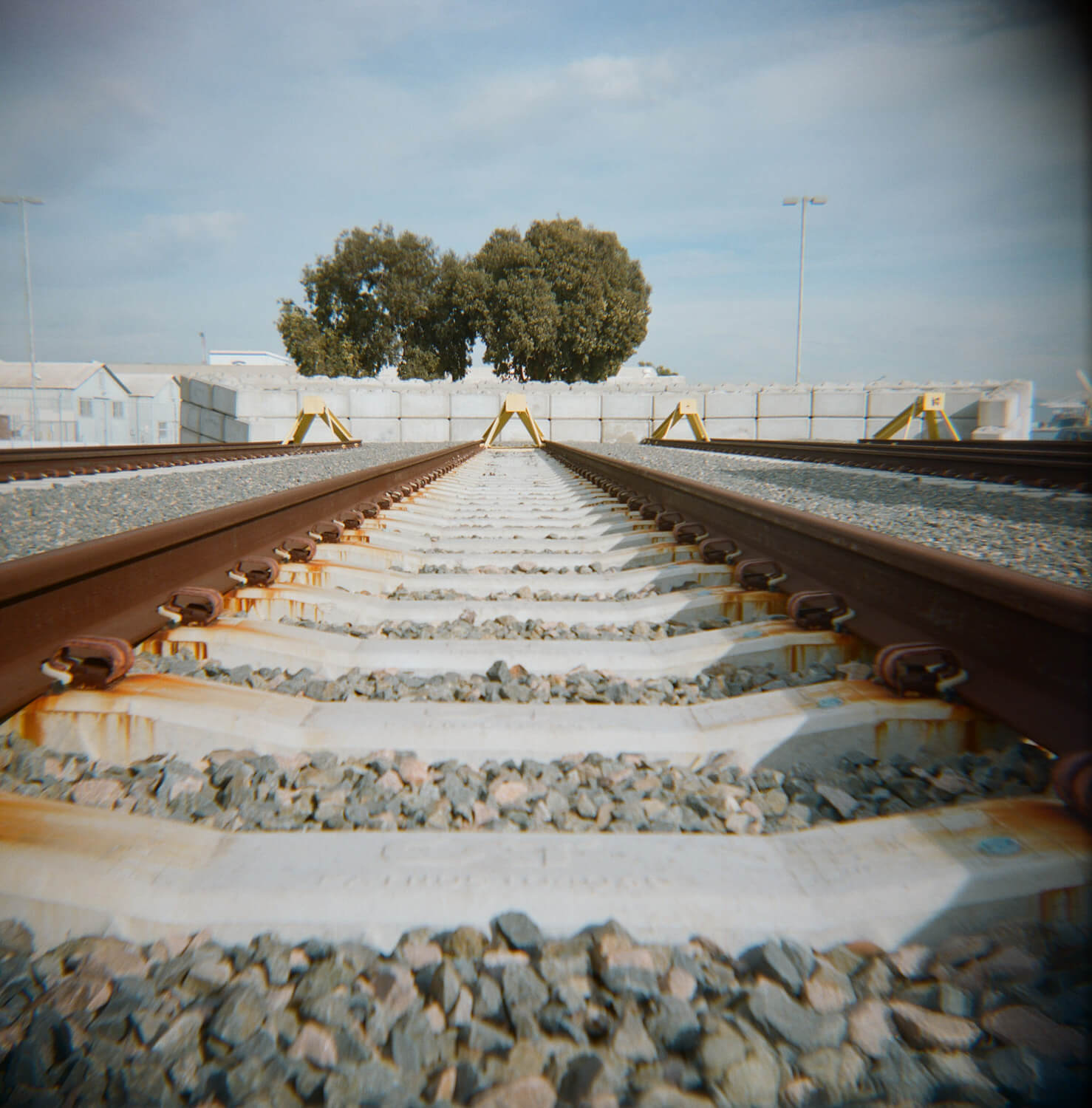This project presented images of the world around me as and when I found them, all captured through the lens of a plastic toy camera. Completed in 2009, the project involved taking one picture at a time, once a week, on one camera, for one year.
Every week’s picture stands alone, as it was found, for whatever reason it caught my eye. Each week represents one found image with no retakes, even when the better picture comes along three days — or one minute — later.
Here’s a quick bonus 53rd shot on December 31st, 2009:

A Year in Plastic was shot entirely on Kodak Portra 400 film without Photoshop manipulation using a single toy camera dedicated to the project for the entire year. A Year in Plastic was more than just clicking the shutter in a random direction once a week to meet a quota. Although the resulting collection of images may look random, they are no more random than the glimpses of the world around us that make us, as photographers and artists, stop and linger over a scene. Perhaps it was the lighting that caught my eye, the arrangement of the elements or the colors in the scene, or even a scene that cried out in my mind to be recorded and captioned as only a toy camera can do.
The Subjects
Anything that caught my eye in my daily travels around the neighborhood, to and from work, on weekend getaways, or anyplace else was fair game. It could have been a colorful scene or an interesting composition, but it had to be something that made me stop and look twice.
Nothing was staged, and nothing was re-shot. With only one picture allowed each week, I couldn’t be too choosy on my choice of subject matter, but I wouldn’t allow myself to just take a random picture just to meet a quota of 52.
The Camera
The Holga. A cheap, plastic, mass-produced Chinese toy camera with a plastic lens, erratic shutter speed, a f/stop somewhere around f/5.6, and zone focusing. The lens came with distortion as standard, vignetting, and a slight fuzziness to the images. The Holga requires copious amounts of gaffers’ tape to ensure that it does not let in so much light that it ruins the film. Every twelve weeks, one roll of film comes out, and a fresh roll goes in.
Why a Holga?
Toy camera fans will understand why I chose the Holga. For everyone else used to auto-focus, auto-exposure, tack-sharp images, look on the internet to learn about these fantastic plastic cameras that have taken the photography world by storm.
Why a Year in Plastic?
Two words; TOY CAMERA! This was never about shooting a lot of film and posting the best shots. It was about sharing an ongoing view of the world, at least my small part of it), as seen through my plastic toy camera. In today’s world of instant photo gratification, sometimes the wait to see what you captured can be half of the fun. The other half of the fun, then as much as it still is for me today, is to get out there and just make pictures.
I leave you with my photos below. Thanks for reading (and looking!).
~ Chris




























































4 responses to “A Year in Plastic: One film, one camera, one week, one picture, one year (Jan 1 – Dec 31, 2009)”
There are some pretty fantastic shots here. Thanks for sharing!
Great article Chris and thanks for sharing your story! Such a diverse body of work – constraints foster creativity, and this goes to show even with the simplest of equipment, a wonderful project can be done!
What a fun project. My wife and I love our Holga, what a fun camera.
I particularly like your photo of the window with the green bars. The plant shadow in the lower left makes the shot. I think it would be a really cool polaroid manipulation too.
Cheers,
Enjoyed reading about the project, your thought process, and seeing your photos.